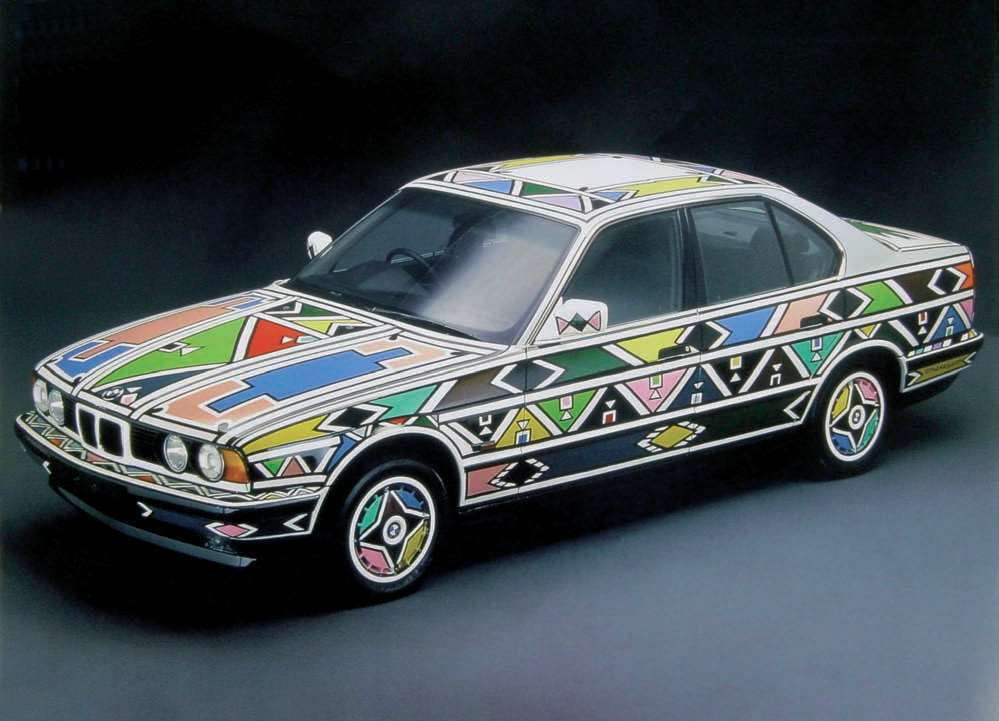Traveling around the world to participate in museum art projects, Esther Mahlangu dazzles her audiences with her precisely executed site-specific and idiosyncratic renditions of traditional tribal Ndebele wall painting, using only her traditional brushes of twigs and chicken feathers. In so doing, Mahlangu is drawing on a custom of wall painting that started in the mid-nineteenth century, under the oppression of white Afrikaner farmers who had appropriated the land belonging to the Ndebele, in what is now Mpumalanga in the north of South Africa. The bold painting of the exterior of their homes developed into an assertion of Ndebele pride, a notification that even though they had been reduced to the situation of near slave labor on land now owned by the farmers, their spirit had not been crushed.
Originally the Ndebele created textured patterns on their cylindrical, mud-walled houses using cow dung as a plastering material, but later they mixed colored clays with the dung to produce pigments of ocher, red, white, and black. The winter rains would wash away the designs, so repainting the houses was an annual ritual, with each family favoring particular emblems and symbols. Gradually commercial paints came into use, and the designs became ever more complex and brilliant.
Mahlangu, who was born in 1935, learned to paint as a ten-year-old girl; she was taught by her mother and her grandmother. Her first introduction into the international art world came when she was invited by curator Jean-Hubert Martin to participate in the groundbreaking Les Magiciens de la Terre at the Centre Pompidou in Paris in 1989. Martin had been traveling around the world looking at pigment-based wall decoration for his exhibition and was deeply impressed by Mahlangu’s house.
Two years later German carmaker BMW invited her to follow in the footsteps of Andy Warhol and Roy Lichtenstein and paint a car, the first—and only—woman artist to be so honored, a project that was part of Documenta IX.
Even when she paints on surfaces like the twenty-four-meter-long wall in the auditorium of the Museum Bochum in Germany, where she showed in New Identities: Contemporary South African Art (2004), Mahlangu, who is now assisted by her son Elias, makes no preparatory sketches and measurements, even for a three-dimensional object like the BMW car. She draws the most complex geometrical designs freehand. In Bochum, climbing scaffolding, she simply started at the top right-hand corner of the vast wall and kept going until her design, reflecting elements of her grandmother’s and mother’s style as well as her own, was complete.
For Mahlangu her painting is an assertion of her Ndebele identity, but for an international audience the strongly graphic nature of her work fits right in to a pop and minimalist aesthetic.

Wall painting, Museum Bochum 2004
240 x 66 cm
Image courtesy of the Museum Bochum
Photographer: Olaf Bergmann
© Esther Mahlangu

BMW 525i Art Car 1991
Image courtesy of BMW
© BMW

Esther Mahlangu’s house, Mpumalanga
Image courtesy of 34 Long
Fine Art, Cape Town
Photographer: Fred de Jager
© Fred de Jager